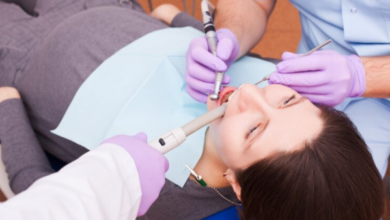The Impact of Social Media on Eating Disorders in Adolescents

In recent years, the proliferation of social media platforms has revolutionized the way we communicate, connect, and consume information. However, this technological advancement has not come without its challenges, particularly concerning its impact on vulnerable populations like adolescents.
One concerning area is the influence of social media on the development and exacerbation of eating disorders among adolescents. With the rise of highly curated images and the prevalence of unrealistic beauty standards, it is essential to explore the intricate relationship between social media and eating disorders.
Negative Impacts of Social Media on Eating Disorders in Adolescents
Social media has rapidly become an integral part of the lives of adolescents, providing platforms for communication, self-expression, and information sharing. However, along with its benefits, social media also has several negative impacts, including its contribution to the development and exacerbation of eating disorders among adolescents.
Body Image Dissatisfaction and Idealization
Social media platforms are flooded with edited and curated images of seemingly flawless bodies, often depicting unrealistic beauty standards. Adolescents, already in a phase of physical and psychological development, are highly susceptible to internalizing these ideals, leading to body dissatisfaction. This dissatisfaction can fuel the desire for drastic weight loss or a “perfect” body, laying the foundation for eating disorders.
Comparison Culture
Social media encourages constant comparison among users, which can intensify feelings of inadequacy and self-doubt. Adolescents may compare their own bodies to those of influencers, celebrities, or peers, fostering negative self-perception and triggering behaviors associated with eating disorders. The constant exposure to “thinspiration” content can normalize unhealthy habits.
Cyberbullying and Negative Comments
Adolescents on social media are susceptible to cyberbullying, body shaming, and negative comments about their appearance. Such experiences can exacerbate low self-esteem, increase body dissatisfaction, and provide an impetus for engaging in extreme dieting or disordered eating behaviors as a coping mechanism.
Validation and Attention-Seeking
Social media platforms thrive on likes, comments, and shares, fostering a need for validation. Adolescents with eating disorders might view their weight loss or thinness as a way to gain attention and validation. This can lead to a dangerous cycle of seeking affirmation through disordered eating patterns.
Pro-Ana and Pro-Mia Communities
These online communities, often hidden from mainstream view, promote and glorify anorexia and bulimia as lifestyle choices rather than serious mental health issues. Social media can facilitate the dissemination of harmful tips, tricks, and encouragement for maintaining eating disorders, drawing vulnerable adolescents deeper into their grip.
Distorted Reality
Social media allows for selective self-presentation, enabling individuals to portray an idealized version of their lives. Adolescents struggling with eating disorders might use filters or strategic poses to mask their struggles, making it harder for friends, family, and professionals to recognize their condition and provide necessary support.
Constant Availability of Triggering Content
Adolescents can be bombarded with triggering content, including photos of restrictive diets, excessive exercise routines, and weight loss transformations. This content can normalize unhealthy behaviors and contribute to the normalization of eating disorders.
Managing the Impact of Social Media on Eating Disorders in Adolescents
The widespread use of social media platforms has brought about both positive and negative effects on society, particularly among adolescents. One concerning area is the influence of social media on the development and exacerbation of eating disorders.
Addressing this issue requires a multi-faceted approach that involves individuals, families, educators, and mental health professionals working together to mitigate the negative impact of social media on adolescents’ mental well-being.
Promoting Media Literacy
One crucial step in managing the impact of social media on eating disorders is promoting media literacy among adolescents. Educators and parents can play a pivotal role in helping young individuals critically assess the content they encounter online. Teaching them to question the authenticity of images, recognize digital manipulation, and understand the unrealistic beauty standards perpetuated on social media can empower them to navigate these platforms more wisely.
Encouraging Open Communication
Creating an environment of open communication between parents, guardians, and adolescents is essential. Adolescents should feel comfortable discussing their online experiences, concerns, and challenges they may be facing due to social media. By actively listening and offering guidance, parents can provide a support system that helps adolescents develop a healthy self-image and resilience against the negative effects of social media.
Fostering Healthy Self-Esteem
Building a foundation of healthy self-esteem is crucial to mitigating the impact of social media on eating disorders. Adolescents need to understand that their self-worth isn’t solely determined by the number of likes or comments on their posts. Encouraging them to find value in their unique qualities, talents, and interests outside of social media can help reduce their vulnerability to seeking validation solely through online interactions.
Creating Safe Online Spaces
While social media can contribute to negative influences, it also has the potential to create supportive online communities. Parents and guardians can guide adolescents toward engaging with positive spaces that promote body positivity, self-love, and recovery from eating disorders. These communities can provide a sense of belonging and connection that counters the damaging impact of unrealistic beauty standards.
Limiting Screen Time
Balancing screen time is an effective strategy for managing the impact of social media on adolescents’ mental health. Encouraging adolescents to engage in offline activities, hobbies, and face-to-face interactions can reduce their exposure to potentially harmful content. This approach can help create a healthier balance between virtual interactions and real-world experiences.
Promoting Positive Body Image
Educational initiatives that promote positive body image should be integrated into school curricula and community programs. These initiatives can help adolescents develop a realistic perception of their bodies and counter the idealized images propagated by social media. Encouraging discussions about body diversity, self-acceptance, and the importance of self-care can contribute to a healthier mindset.
Collaborating with Mental Health Professionals
Mental health professionals have a significant role in managing the impact of social media on eating disorders in adolescents. Schools, families, and healthcare providers should collaborate to identify early signs of disordered eating and provide timely interventions. This collaboration can involve educational campaigns within schools, workshops for parents on recognizing signs of distress, and counseling services that address the mental health challenges exacerbated by social media.
If you are struggling with body issues that are now affecting your mental health, visit Mindshift Psychological Services. Check out their website to learn more about their therapy and counseling sessions. Contact them at (714) 584-9700 to schedule an appointment.
Read More: Sciatic Nerve Pain




